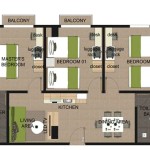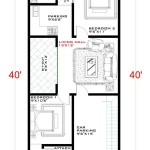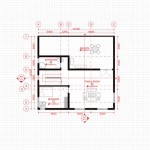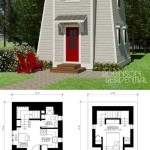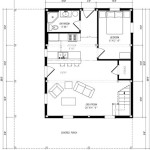Antique House Plans: A Look At Classic Home Designs in Collierville
Collierville, Tennessee, with its rich history and commitment to preserving its heritage, offers a unique lens through which to examine antique house plans. These plans, often meticulously drafted decades or even centuries ago, provide insight into the architectural styles, building materials, and lifestyle preferences of bygone eras. Studying such plans is not merely an exercise in historical curiosity; it can inform modern construction, renovation, and preservation efforts, particularly in areas like Collierville where maintaining historical character is highly valued.
Antique house plans encompass a wide array of architectural styles, each reflecting the prevailing aesthetics and functional needs of its time. From the simple, functional designs of early American farmhouses to the ornate detailing of Victorian mansions, these plans offer a tangible connection to the past. Furthermore, the plans document the evolution of construction techniques, detailing the use of locally sourced materials and the methods employed to create sturdy and aesthetically pleasing structures. Examining these plans can reveal innovative solutions to common building challenges, solutions that may still be relevant today.
Understanding the nuances of antique house plans requires familiarity with architectural terminology and drafting conventions specific to different periods. Terms like "parlor," "scullery," and "summer kitchen" denote spaces with functions that may not be immediately apparent to contemporary readers. Similarly, the symbols and abbreviations used in old blueprints can differ significantly from modern standards. Navigating these differences requires careful study and often the assistance of architectural historians or preservation specialists. The rewards, however, are significant, offering a detailed understanding of the design principles and construction practices that shaped the built environment.
Key Point 1: Architectural Styles Reflected in Antique House Plans
Antique house plans in Collierville and the surrounding region showcase a diverse range of architectural styles, each with distinct characteristics and historical significance. The early settlement period often saw the construction of simple, vernacular structures, reflecting the limited resources and practical needs of the pioneers. These homes were typically characterized by their rectangular shapes, minimal ornamentation, and use of locally sourced materials like wood and stone. Floor plans were straightforward, often consisting of a central hall flanked by two rooms on each side.
As Collierville prospered, more elaborate architectural styles began to emerge. The Greek Revival style, popular in the mid-19th century, featured prominent columns, symmetrical facades, and classical details. House plans from this period often included formal living spaces, such as parlors and dining rooms, reflecting the growing emphasis on social etiquette and refinement. The Italianate style, also popular during the Victorian era, was characterized by its asymmetrical design, bracketed eaves, and tall, narrow windows. Italianate house plans often incorporated towers or cupolas, adding to their visual appeal.
The late 19th and early 20th centuries witnessed the rise of other architectural styles, including the Queen Anne, Craftsman, and Colonial Revival. Queen Anne homes were known for their elaborate ornamentation, including turrets, bay windows, and decorative shingles. Craftsman homes, in contrast, emphasized simplicity and functionality, with exposed rafters, wide porches, and natural materials. Colonial Revival homes drew inspiration from early American architecture, featuring symmetrical facades, pedimented doorways, and multi-pane windows. Studying antique house plans from these periods provides a valuable glimpse into the evolving tastes and lifestyles of Collierville residents over time.
Key Point 2: Building Materials and Construction Techniques
Antique house plans offer detailed information about the building materials and construction techniques employed in specific eras. In the early days of Collierville, timber was the primary building material, due to its abundance and ease of use. Log cabins and timber-frame houses were common, with walls constructed from hewn logs or sawn lumber. Mortar, used to bind stones or bricks together, was often made from lime, sand, and water, sometimes mixed with animal hair for added strength.
As sawmills became more prevalent, frame construction became more widespread. Frame houses consisted of a wooden skeleton, with walls covered in clapboard siding or brick veneer. Antique house plans often specify the dimensions of lumber, the type of nails used, and the method of framing. They may also include details about the foundation, roofing materials, and insulation. The evolution of heating and cooling systems is also evident in these plans. Early homes relied on fireplaces for heating, while later homes incorporated stoves and eventually central heating systems.
The types of materials used often reflected the local resources available. For example, some areas might have abundant supplies of limestone, leading to its use in foundations and walls. Other areas might have clay deposits suitable for making bricks. Studying antique house plans can reveal the resourcefulness and ingenuity of early builders, who adapted their construction techniques to the materials at hand. These plans also provide valuable information for modern preservationists, helping them to understand the original construction methods and select appropriate materials for repairs and restoration.
Key Point 3: Understanding Floor Plans and Spatial Organization
Antique house plans provide a window into the lives of those who inhabited these homes, revealing how space was organized and utilized. Early American homes often featured simple, functional floor plans, with rooms serving multiple purposes. The central hall, for example, might have been used for cooking, eating, and sleeping. As families grew and lifestyles became more refined, floor plans became more specialized, with separate rooms designated for specific activities.
Victorian-era house plans often included formal living spaces, such as parlors and drawing rooms, which were used for entertaining guests. Bedrooms were typically located on the upper floors, while service areas, such as kitchens and laundries, were relegated to the rear of the house. The placement of windows and doors was also carefully considered, to maximize natural light and ventilation. Antique house plans often include notations about the orientation of the house in relation to the sun and prevailing winds.
The location of staircases, hallways, and other circulation routes can reveal important information about the social dynamics of the household. For example, a grand staircase in the front hall might have served as a focal point for social gatherings, while a back staircase might have been used by servants. Studying the floor plans of antique houses can provide insights into the daily routines, social customs, and hierarchical relationships of the people who lived there. It is important to consider the cultural context within which these homes were designed and built, to fully appreciate the nuances of their spatial organization.
Furthermore, antique house plans often incorporate details about the landscaping and outbuildings associated with the main house. These details can provide valuable information about the overall design of the property and its relationship to the surrounding environment. The placement of gardens, orchards, and barns can reveal the importance of agriculture and self-sufficiency in the lives of early residents. The design of fences, gates, and pathways can reflect the owner's aesthetic preferences and their desire to create a welcoming and visually appealing environment. Examining these elements in conjunction with the house plans provides a more complete picture of the historic property and its significance.
Accessing antique house plans can involve various resources. Local historical societies and museums often maintain collections of architectural drawings and blueprints. County courthouses may have records of property deeds and construction permits, which can include house plans. Online archives and databases are also increasingly available, providing access to digitized collections of historic documents. Consulting with architectural historians and preservation specialists can be invaluable in interpreting antique house plans and understanding their historical context. These professionals can offer guidance on how to research specific properties, identify architectural styles, and interpret drafting conventions.
Preserving antique house plans is essential for safeguarding our architectural heritage. These documents provide a tangible connection to the past and offer valuable insights into the design and construction practices of previous generations. Proper storage and handling techniques are crucial for ensuring their long-term survival. Plans should be stored in acid-free folders and boxes, in a cool, dry, and dark environment. Digital archiving is also an important strategy, allowing for wider access and preventing damage to original documents. By preserving antique house plans, we can ensure that future generations have the opportunity to learn from and appreciate the rich architectural history of Collierville and the surrounding region.

A Collierville Classic Memphis

Adam Stanford On Linkedin 189 Kelsey St Collierville Tn 38017 Mls 10156574 Zillow

Collierville Tn Real Estate Homes For Com

Peterson Lake Heights Collierville Real Estate Homes For Com

1329 Bray Station Rd Collierville Tn Houses For

The Historic Stratton House Is Now An Amazing B

The Historic Stratton House Is Now An Amazing B

Collierville Tn New Construction Homes For Com

The Historic Stratton House Is Now An Amazing B

Collierville Tn New Homes For Construction In Redfin
Related Posts




